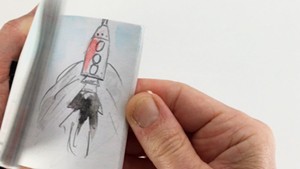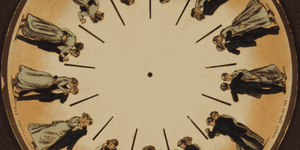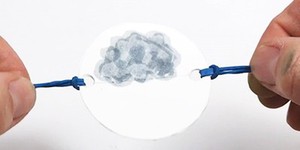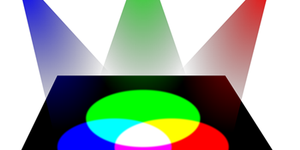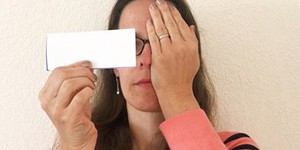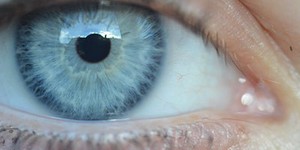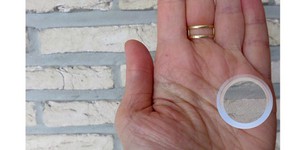Summary
Introduction
Have you ever been tricked by an optical illusion? Optical illusions can be fun, but they are also quite scientific. In this activity you will investigate the phenomenon of apparent motion by making your own flipbook animations.
Materials
- 25 lined 3 X 5 inch index cards (or 50 3 X 2.5 inch cards cut from cardstock)
- Scissors
- Two binder clips
- Colored markers, highlighters, pencils or crayons
- Volunteers
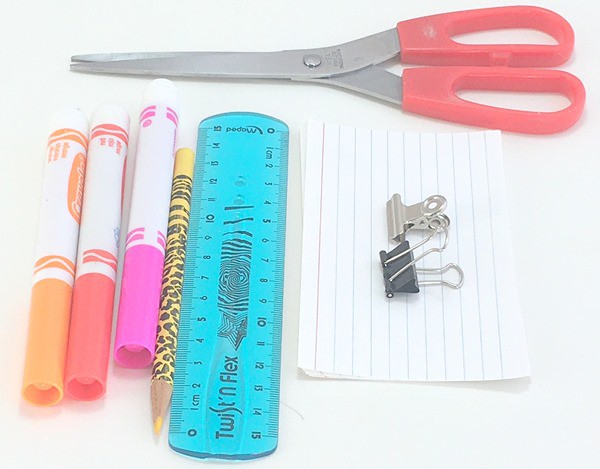 Image Credit: Sabine De Brabandere, Science Buddies / Science Buddies
Image Credit: Sabine De Brabandere, Science Buddies / Science Buddies
Prep Work
- Carefully cut the lined index cards in half to make 50 half-size cards (3 X 2.5 inch). Try to cut the cards as evenly in half as possible. If you start with cardstock, cut 50 cards of 3 X 2.5 inch.
- Divide the cards into two stacks of 25 cards each.
- On one of the stacks, draw a small circle (about ¼ inch diameter) on the top card on the right end of the top line. On the next card in the same stack, draw a similar-size circle just as far to the right, but on the next line space down. Continue drawing circles on each card, each time on the line space right below the circle on the previous card, until you reach the bottom of a card. If your cards do not have lines, draw the first circle ¼ inch from the top of the card, the second ½ inch from the top, the third ¾ inch from top and so on, each time ¼ inch further down until you reach the bottom of the card.
- Then on the next card draw a circle (just as far to the right) on the next line space up from the previous circle (or ¼ inch up) and continue this until you reach the top of a card.
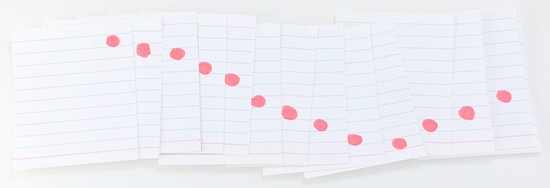 Image Credit: Sabine De Brabandere, Science Buddies / Science Buddies
Image Credit: Sabine De Brabandere, Science Buddies / Science Buddies
- Repeat this entire pattern (making a series of "animated dots" going up and down along the right edge of the cards) until you reach the end of the stack.
- On the second stack, again draw a small circle on the top card on the far-right end of the top line. On the next card in the stack, draw a similar-size circle just as far to the right, but four line spaces down (skipping three line spaces). On the next card, draw a circle four line spaces down from the previous circle. If your cards do not have lines, draw a circle on the top card ¼ inch from the top of the card, on the second card 1¼ inch from the top, and on the third card, 2¼ inch from top of the card.
- Then, on the next card in that stack, draw a circle (just as far to the right) four line spaces up from the previous circle (again skipping three line spaces, or 1 inch up if the cards have no lines), and continue this until you reach the top of a card.
 Image Credit: Sabine De Brabandere, Science Buddies / Science Buddies
Image Credit: Sabine De Brabandere, Science Buddies / Science Buddies
- Repeat this entire pattern until you reach the end of the second stack.
- Neatly stack each deck. Tap the circled edge of each card stack on a flat surface so that none of the cards' edges are sticking out (or in) from the rest in the stack.
- Clip a binder clip on the opposite edge of each stack.
Instructions
- In a moment you will flip through your flipbooks.How do you think the flipbooks will look when flipped? Will there be a difference between them?
- Flip through both flipbooks to make sure nearly every card shows while flipping. If needed, remove the clip, re-tap the cards' edges so the circled edges all line up perfectly, and replacing the clip.Was your prediction correct? Why do you think this happens?
- Ask a volunteer to flip through the first flipbook, the one in which no line spaces are skipped between cards, and then to flip through the other flip-book.To the volunteer, does it look like the circles move to the bottom of the card, then back to the top, and so on, going up and down along the edge of the stack? Or does the circle appear to move differently, such as by jumping around or flashing?
- Have other volunteers flip through each flipbook and reverse the order in which you show the flipbooks each time you switch volunteer.For each flipbook, does the volunteer think the circles move to the bottom of the card, then back to the top, and so on? Or do they think the circle is doing something else?
- The optical illusion where you perceive something as moving while in fact you are seeing many still pictures flashing rapidly before your eyes is called apparent motion.How do you think the volunteers' answers are related to apparent motion or how we perceive motion?
- In this activity you tested whether the distance between objects has an effect on apparent motion, but there are other variables you can test, such as the speed at which the flipbooks are flipped and the size of the circles. You can also test what happens when you make the cards larger.How does flipping the cards in the flipbook faster or slower affect your results? Does using larger or smaller circles alter your results? What about larger cards.
- Armed with your test results, tell a mini story in a flipbook. Maybe you want to depict a rocket blastoff, a bird flapping its wings, or a hatching chick.
What Happened?
When no lines are skipped, the circles in the flipbook should have clearly appeared to move down, then up, then back down again. Our brains can easily fill in some blanks and make sense of this motion when such a relatively short distance is skipped between images (for example, cards). In the second flipbook, however, three lines were skipped between images and this was probably too great a distance for the brain to decide the motion should be a smooth up-and-down one. Instead, the circles may have appeared to jump around or even flash, especially if not every card was viewed when flipping. In other words, the brain perceived apparent motion with one flipbook, but most likely did not perceive this phenomenon with the other flipbook.
Digging Deeper
When you perceive an object visually, an image of that object is projected onto the back of your eye (specifically, the retina). This information is sent to the brain (via the optic nerve) where it is processed and interpreted, forming the image that you see.
One optical illusion that has had a huge impact on our culture is the illusion of apparent motion. This might sound complicated, but you experience this illusion every time you watch cartoons. You perceive that the characters on the screen are moving fluently, but in fact you are seeing many still pictures flashing rapidly before your eyes. How does this work? Basically, our brains are trying to make sense of what we are looking at by "smoothing out" the individual images that make up a cartoon into one continuous but changing scene. To do this it is thought that our brains put all of the pieces together and fill in blanks, or missing images, based on what we have already seen. Thus, our minds create the illusion of movement. Our brains not only do this when we are watching cartoons or movies—they actually do this all the time, such as when we blink.
Ask an Expert
For Further Exploration
- In addition to flipbooks, there are many other types of animations, such as thaumatropes, phenakistiscopes and zoetropes. Look into these other animation types and how to make them. How is the spacing of objects (which you investigated in this activity using flipbooks) important when making one of these other types of animations?
- Stop motion movies use the illusion of apparent motion to make it look like their characters move. Make a stop motion movie. You can find a link to a beginner's guide in the additional resources.
Related Resources
Project Ideas
Activities
Lesson Plans
- MS-LS1-8. Gather and synthesize information that sensory receptors respond to stimuli by sending messages to the brain for immediate behavior or storage as memories.

